For those beginners out there, sometimes you might end up with a build-up which contains much more energy than the drop itself in your tracks. I used to have that problem until I discover these 4 simple tricks for build-ups. For a smooth transition between the build-up and the drop, we need to create a contrast between the build-up and drop so that the build-up doesn’t sound more powerful than how the drop sounds.
I used to ask myself this question a lot.
“How do I make a smooth transition from one section of the song to another while keeping the energy high?”
I then discovered the “wash-out” effect. This effect utilizes a combination of reverb, stereo imaging, filtering and gain control.
Let’s get started.
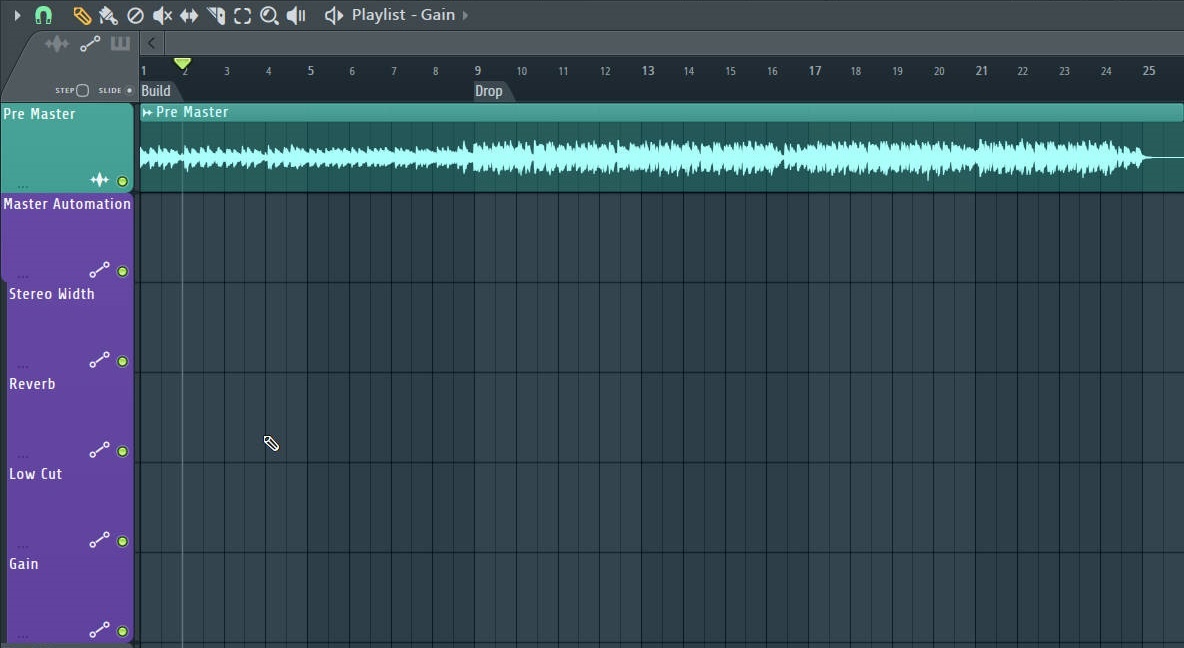
I like to apply this effect before I do the mastering of my track. You can do it while mixing your tracks. It all depends on your workflow.
I usually put my song into the playlist and label the arrangement of the song. Based on the picture above, you can clearly see that I label “Build” and “Drop” on the timeline so that I can execute this trick more precisely.
1. Stereo Imaging
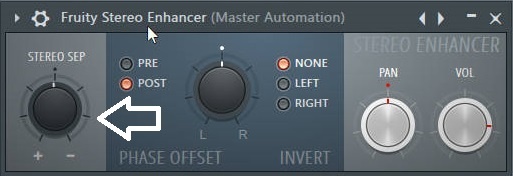
First one on the chain is the Fruity Stereo Enhancer. You can use any 3rd Stereo Imaging plug-ins out there. I’ll just stick to using native plug-ins with FL Studio so those beginner producers who cannot afford 3rd party plug-ins can follow along. I’ll be automating the STEREO SEP knob. Twisting the knob to the right make your mix into mono and vice versa.
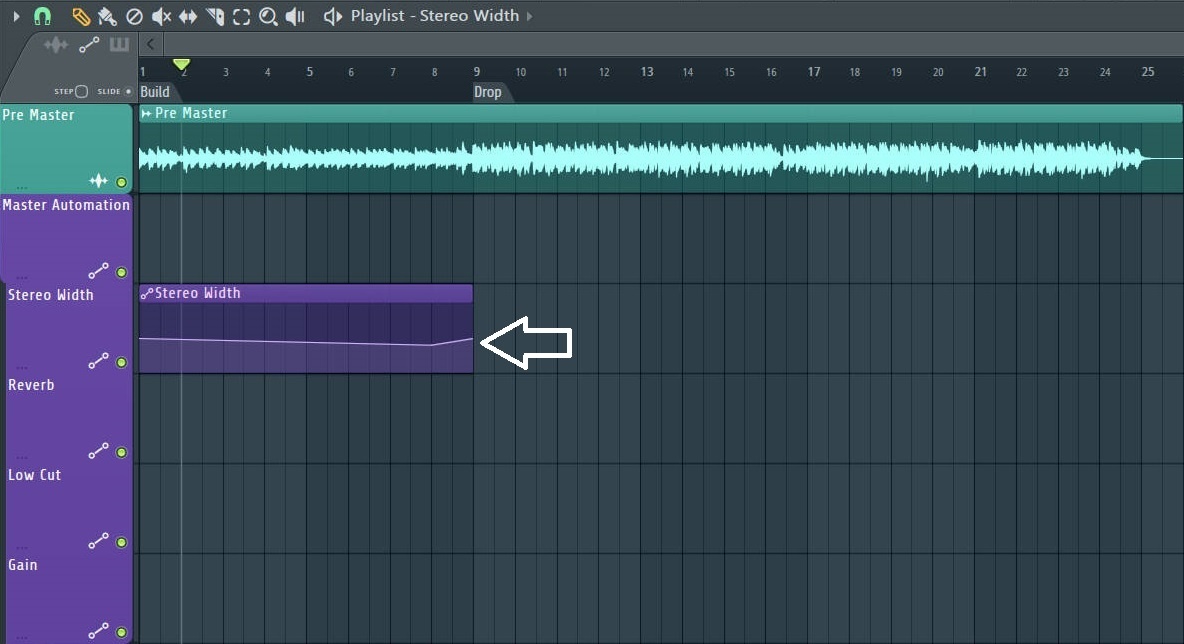
I always like to increase the stereo width of the track for about 15% – 20% to take out some mid frequency off the track. Therefore, it will create an audio illusion by which the punchiness of the song increases when the drop hits.
2. Reverb
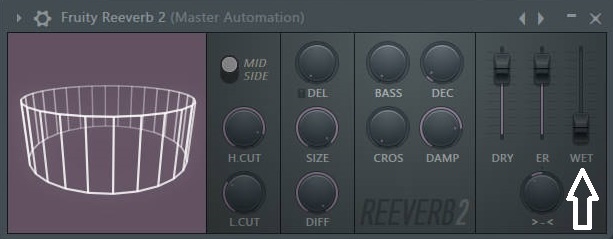
Reverb is used to create/add some sort of ambiance to the song thus adding a “dreamy” sound effect to the song. I like to use huge bright hall reverb for this trick with 4 second of decay time. Do not forget to roll off the low end of the reverb by twisting the L.CUT (low cut) knob so that it will not cause a muddy mix in the low end.
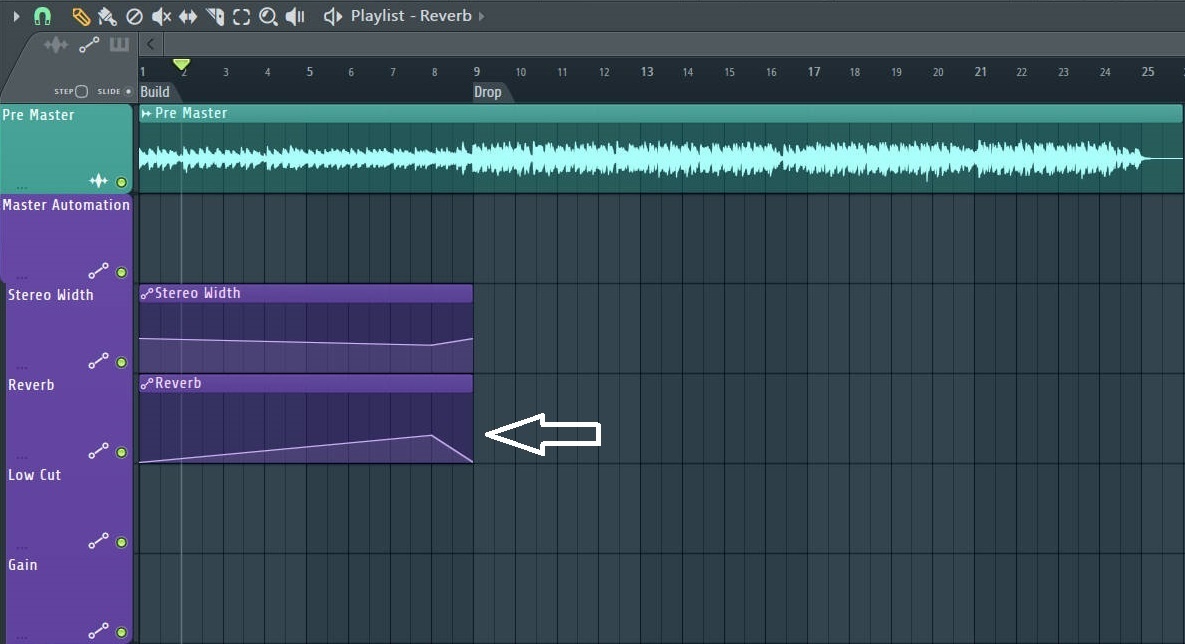
I like to increase the percentage of wet signal by 20% – 40% (it varies from track to track because I treat every song differently) from 0% and decrease it back to 0% when the drop hits.
3. Filtering (Low Cut)

You don’t necessary have to use an EQ plug-in for this. You can use a filter plug-in too as long as it has high-pass filtering function. This is done to roll off the low end of the song thus creating an emptiness effect to the song. When the drop hits, there is a big difference or contrast between these 2 sections.

I like to roll off the low end up to 100Hz – 120Hz then bring it back to normal when the drop hits.
4. Gain Control
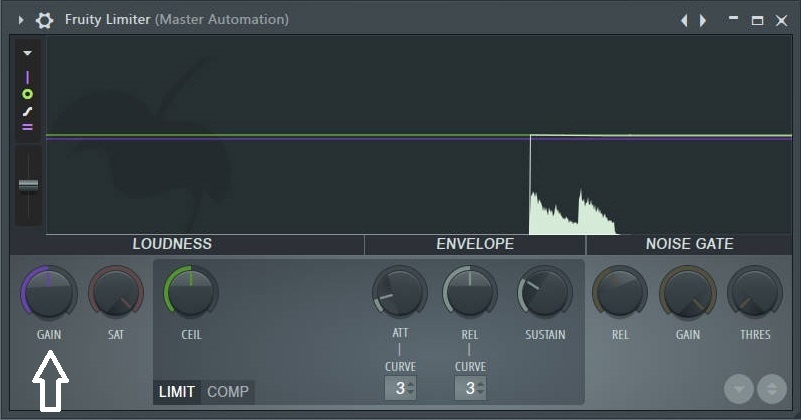
I like to use Fruity Limiter for this purpose because I get to see and decide how many dB I want to reduce during the build-up section. Sometimes in the build-up section, we as producers tend to add lots of stuffs like Snare Rolls, Risers or Sweeps hoping to create a smooth and flawless transition. Eventually, we kind of destroy the dynamic range of our song. In other words, our build-up might be louder than the drop. Drop section is like the main core of electronic music so it should be the loudest and most powerful part of the song.
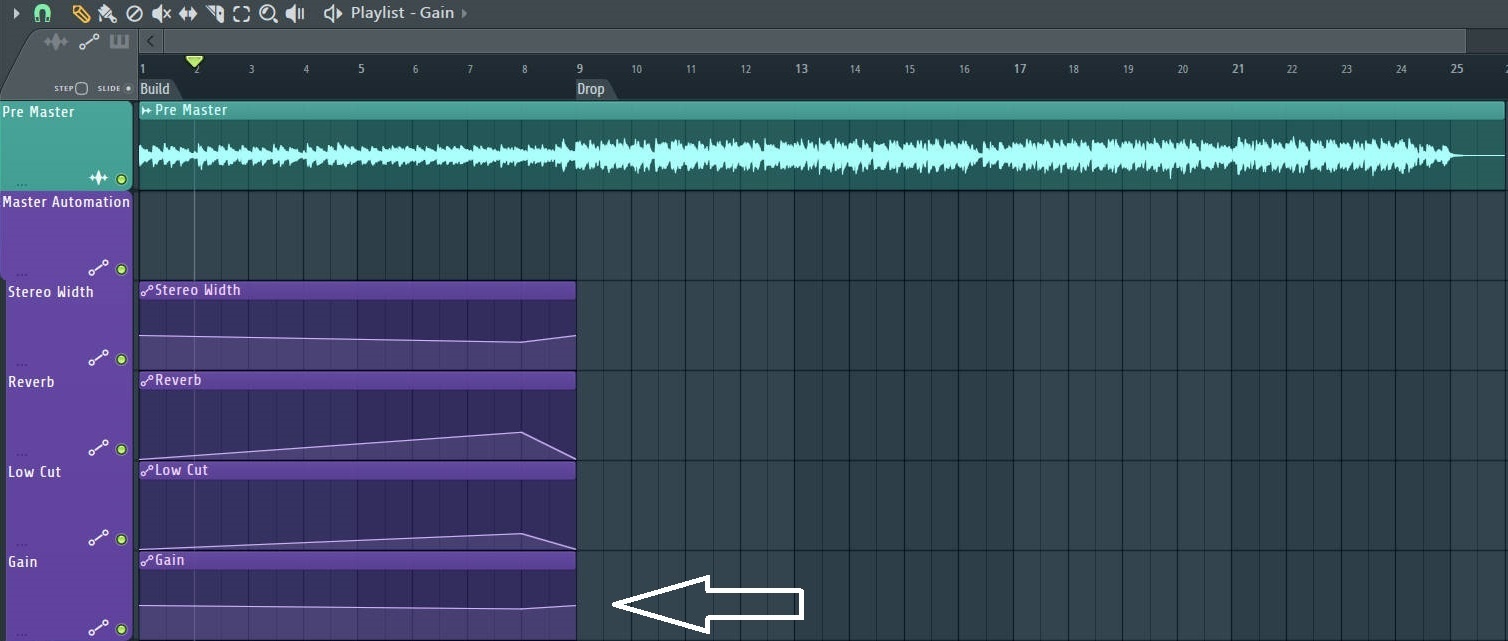
Depending on the dynamic range of the song, I always decrease the gain of the song by 1 – 3 dB and bring it back when the drop hits. Unless you want to create countless automations to decrease the gain of every element in your song, this is probably one of the best ways to avoid the build-up from being louder than the drop.
I hope that you learn something from this article.
What are your biggest tips in creating clean transition from build-up to drop?
Share them down in the comment section below.
Thanks
Nicolas from W. A. Production
















_Cropped.png?width=1600&name=02%20(2)_Cropped.png)




















Your Comments :